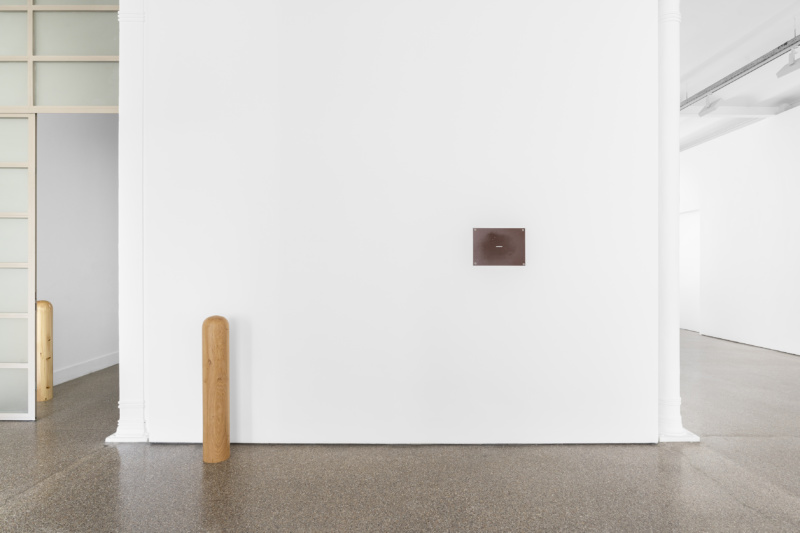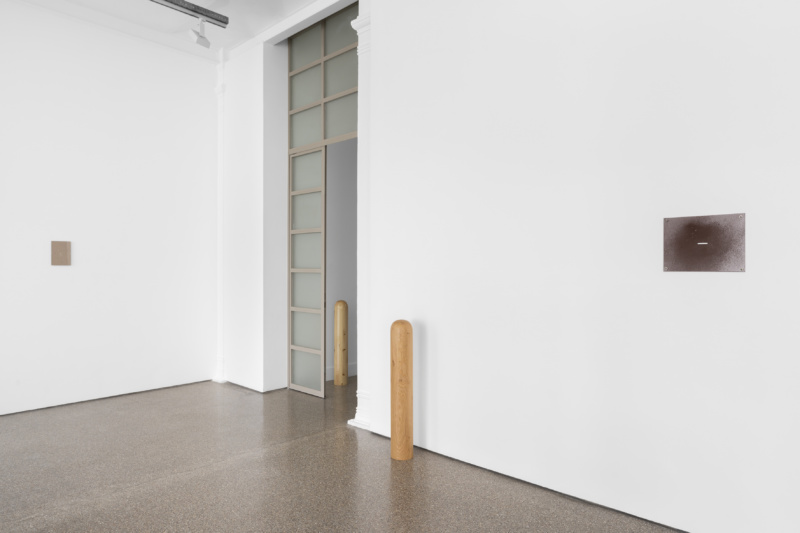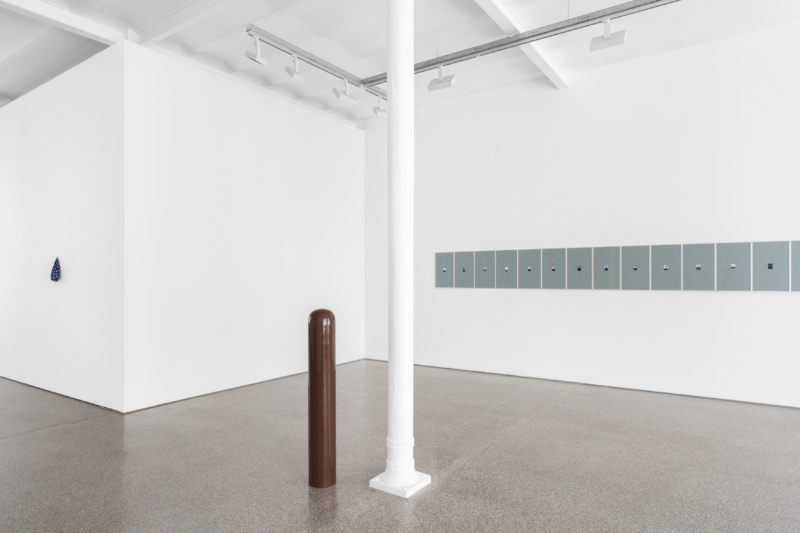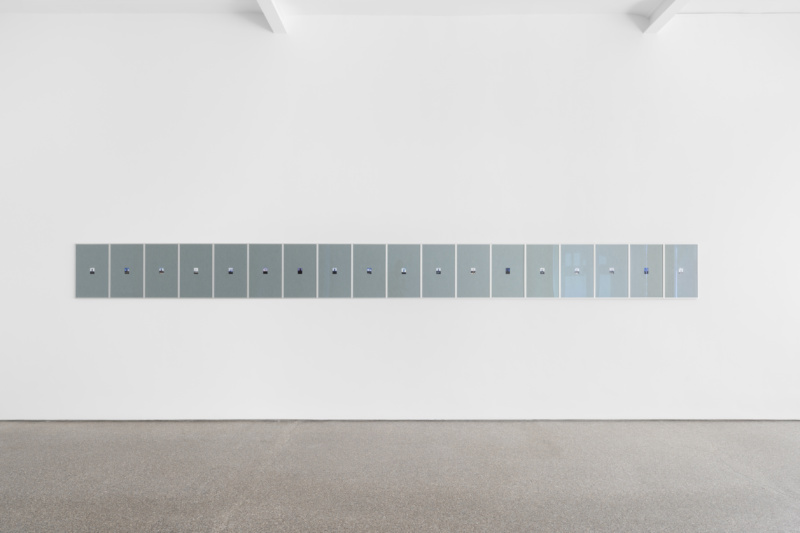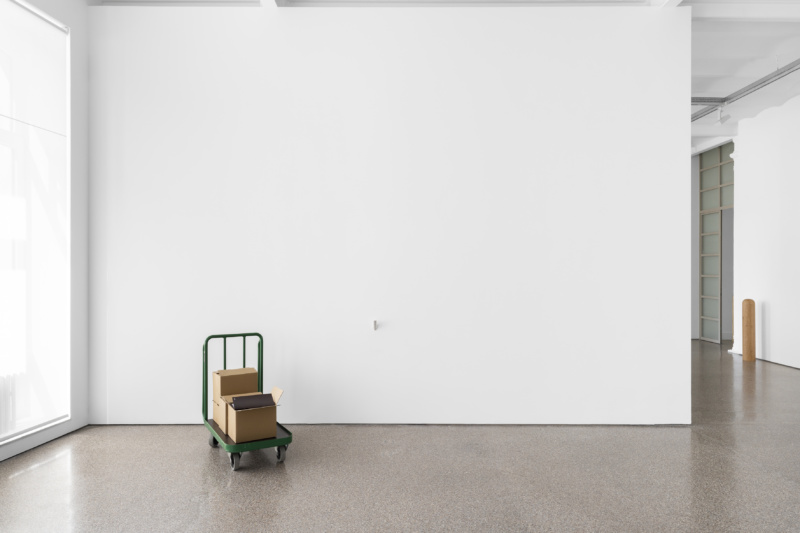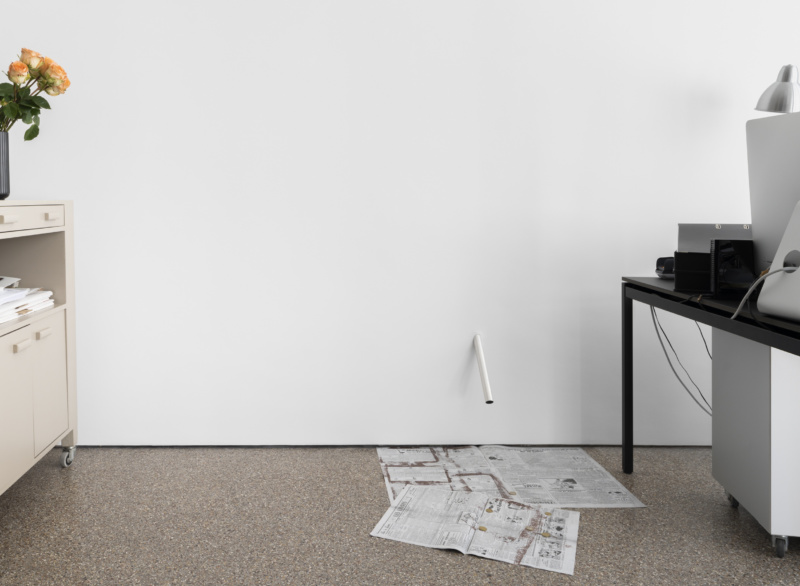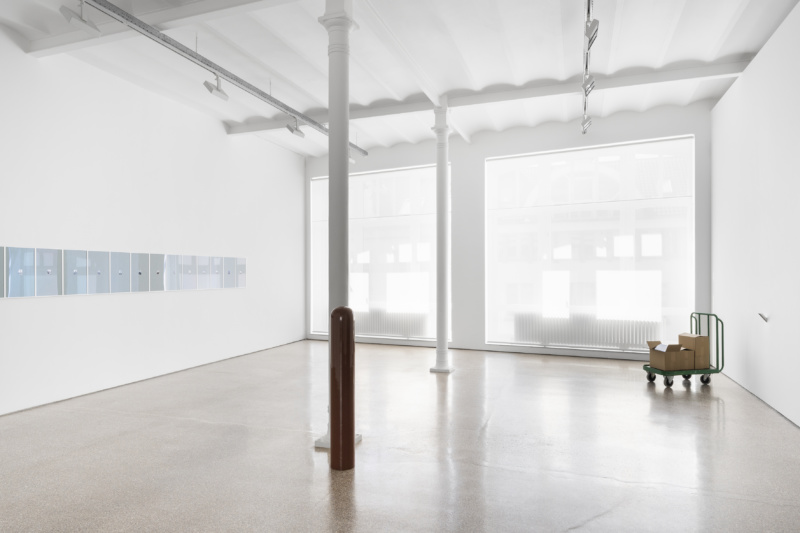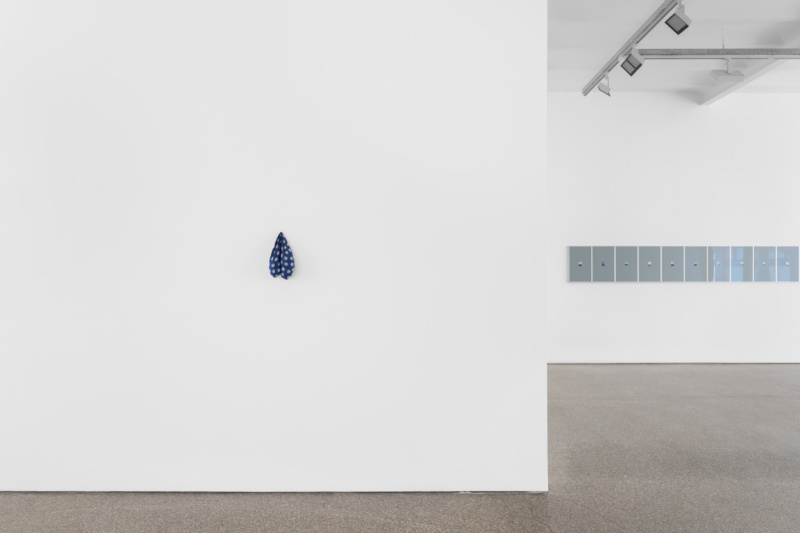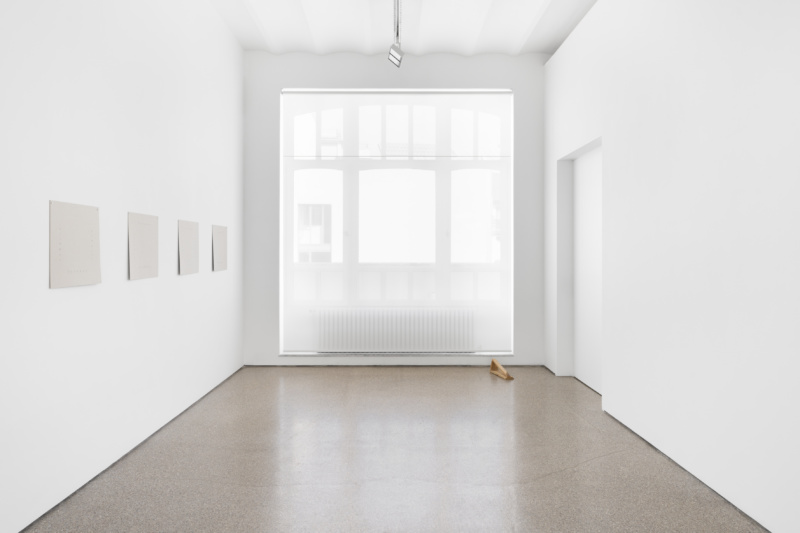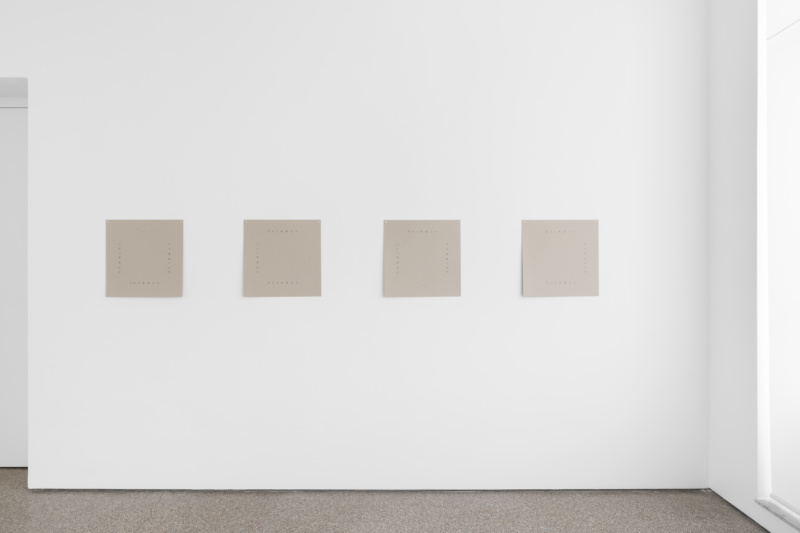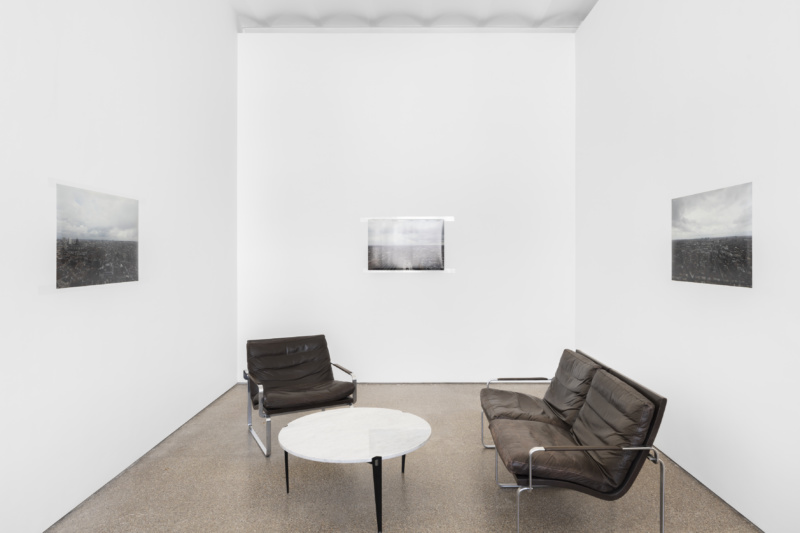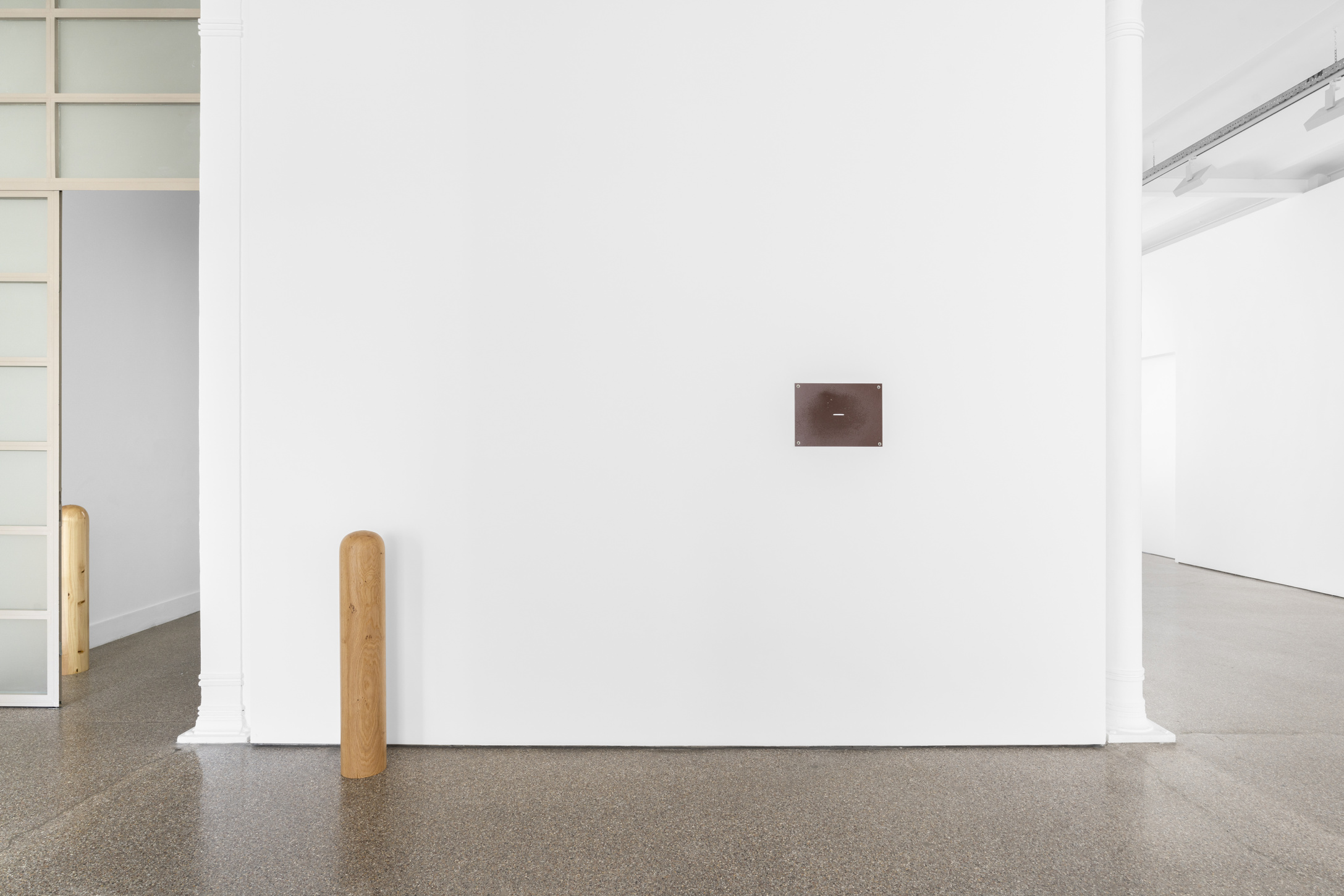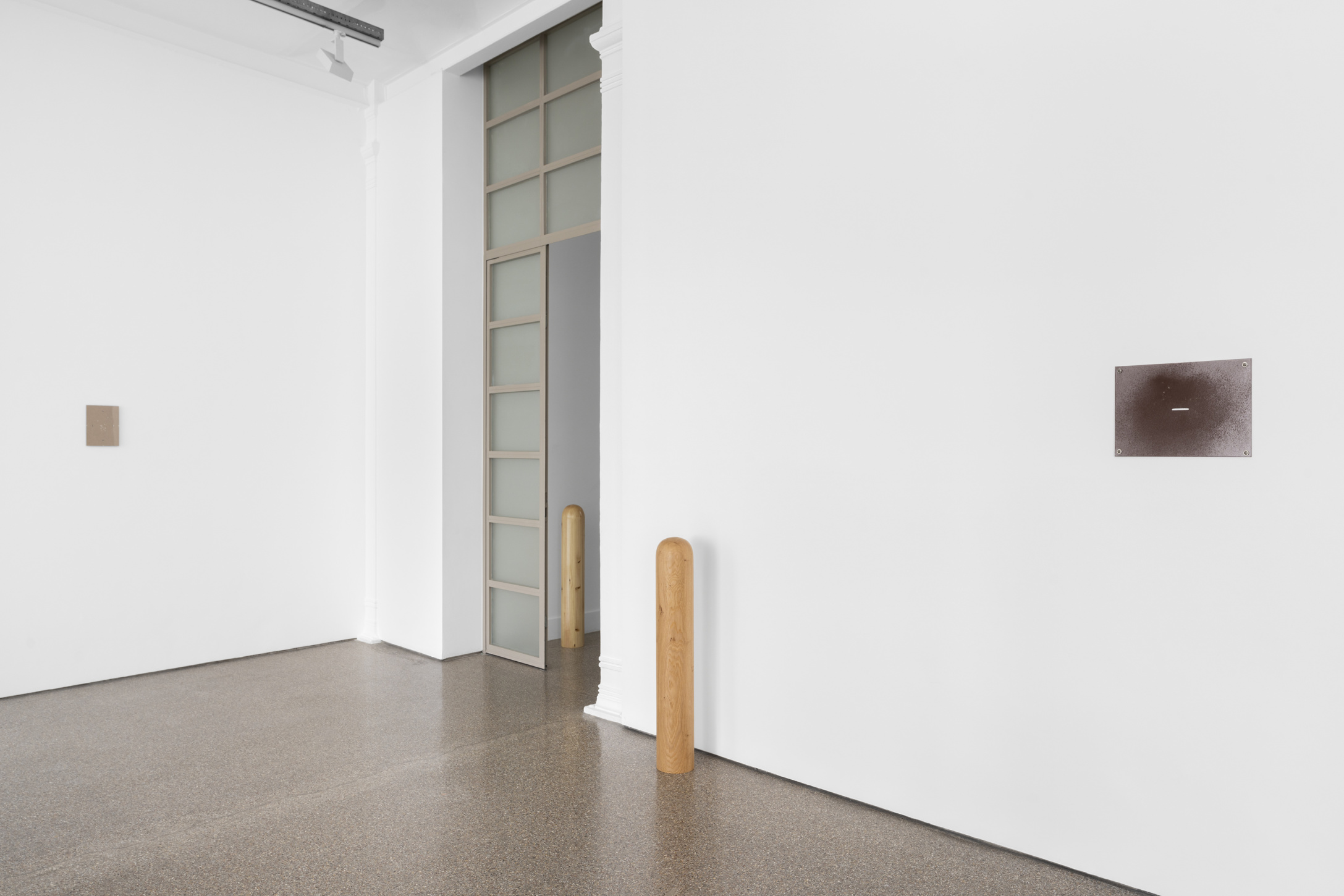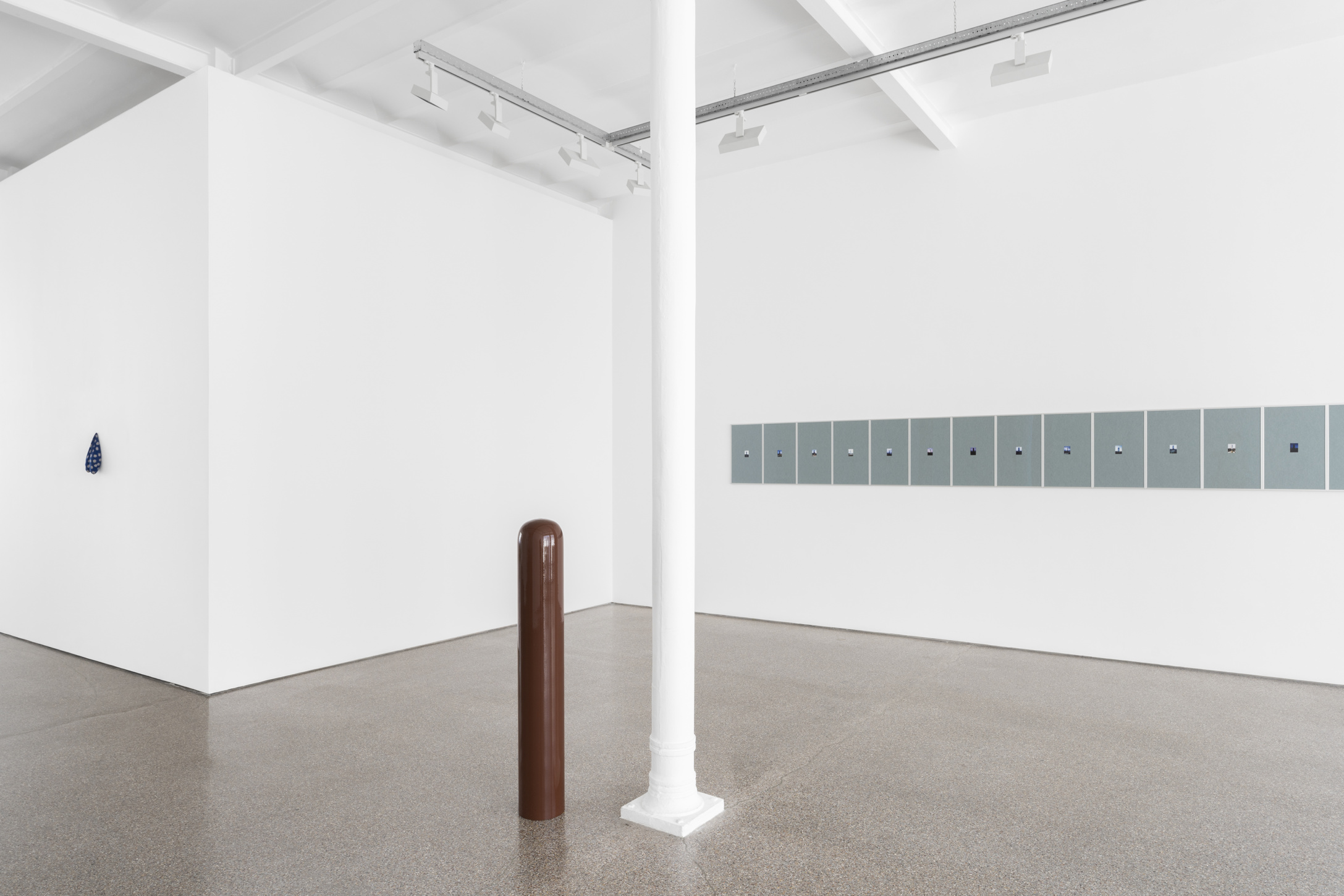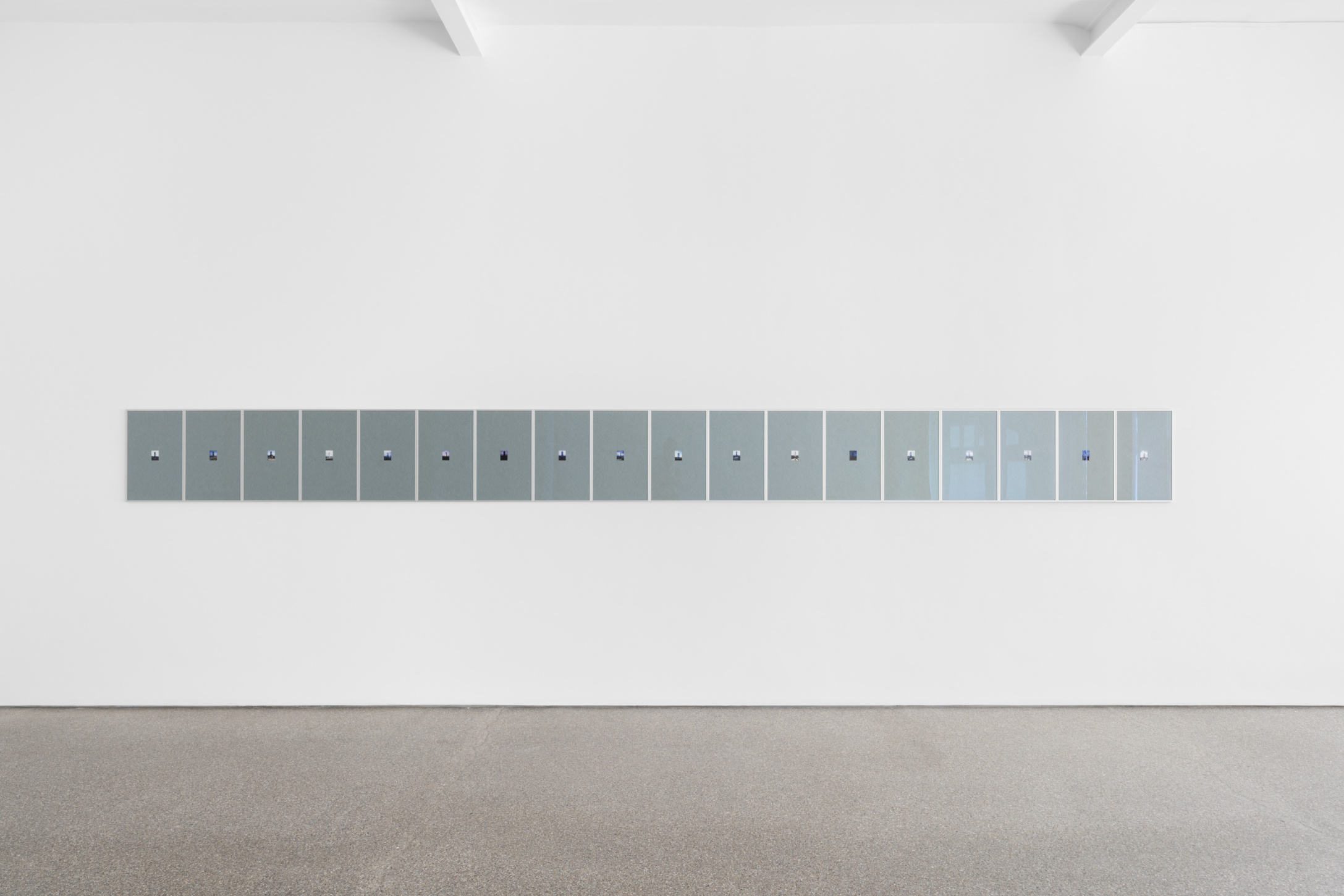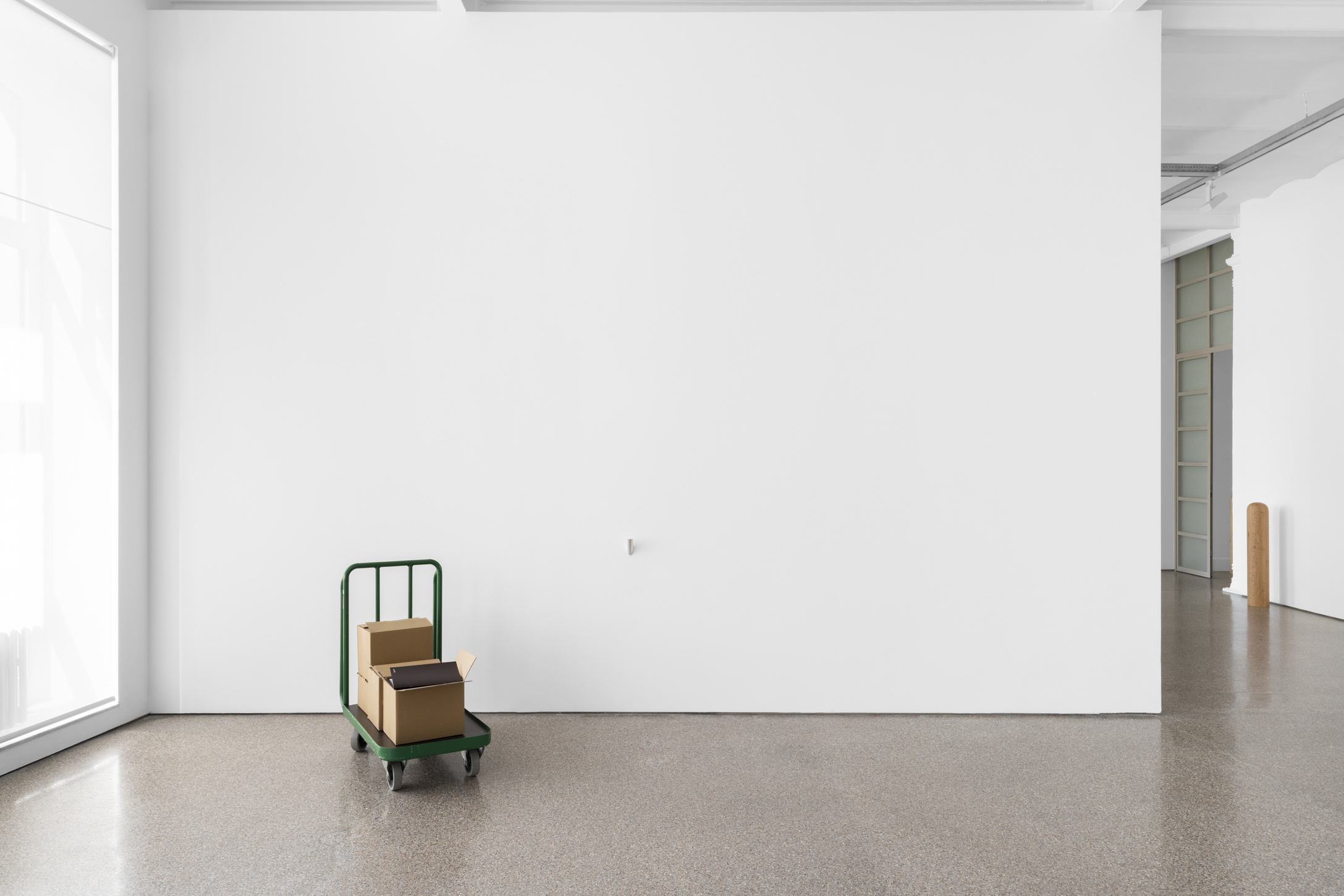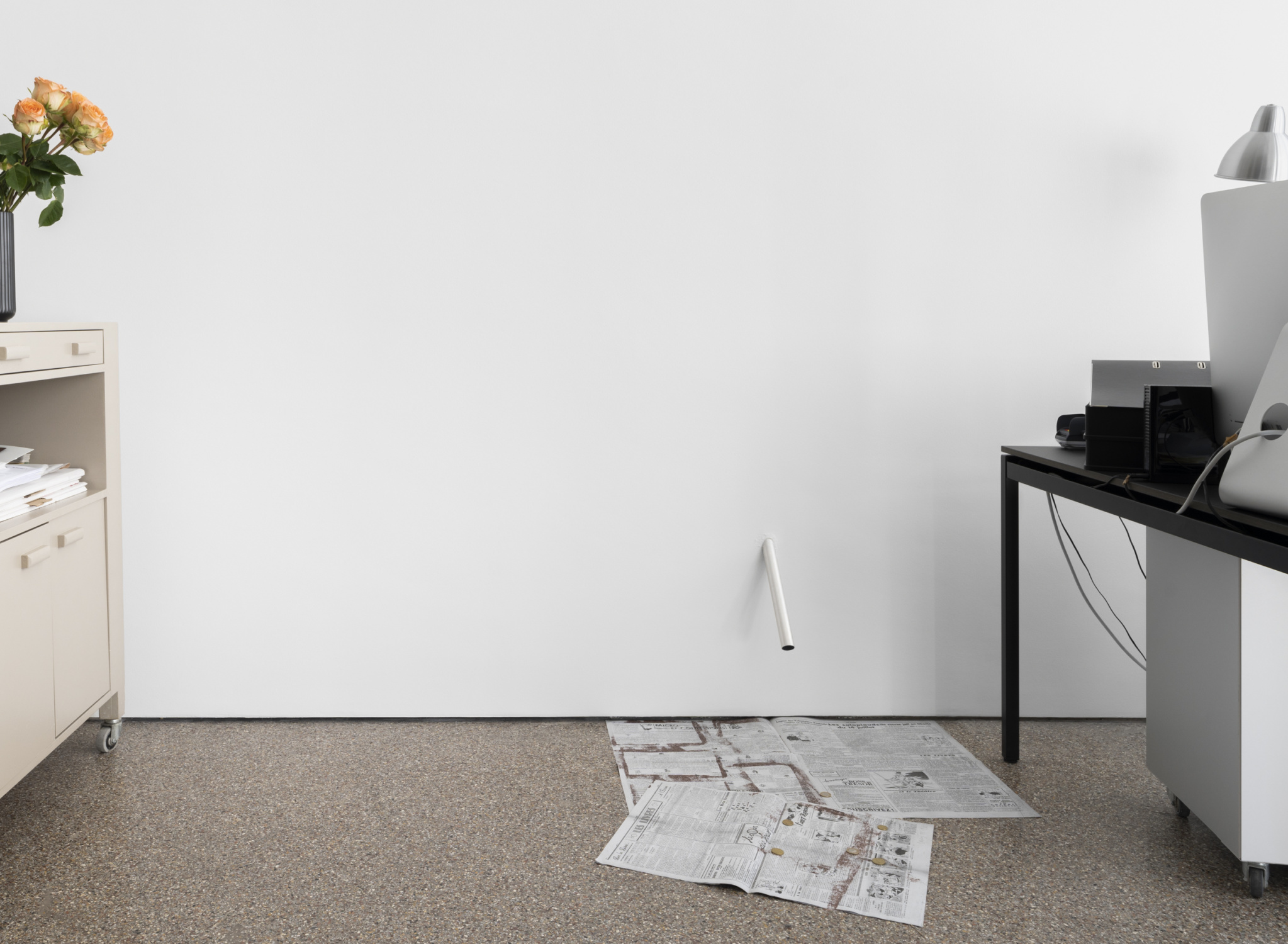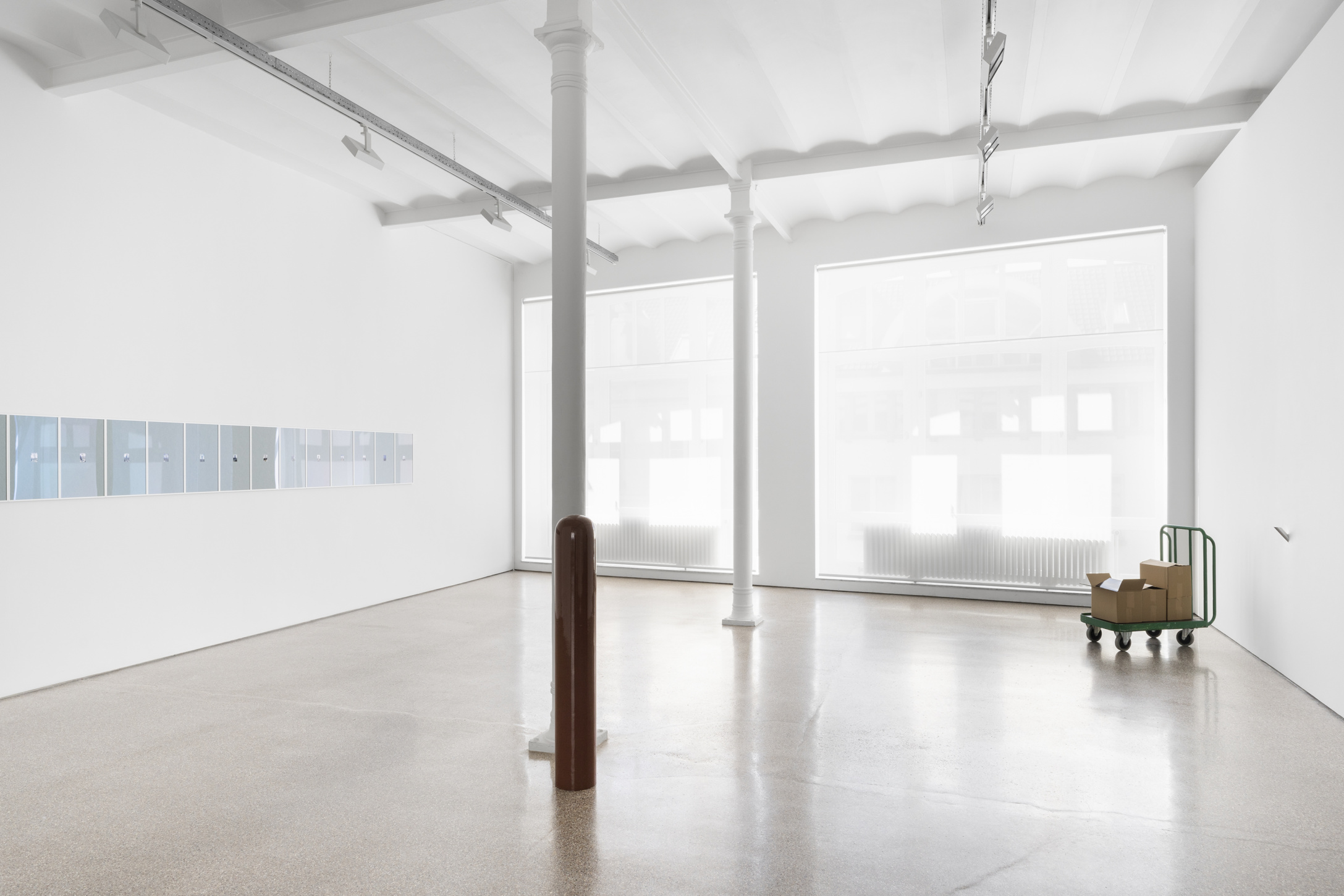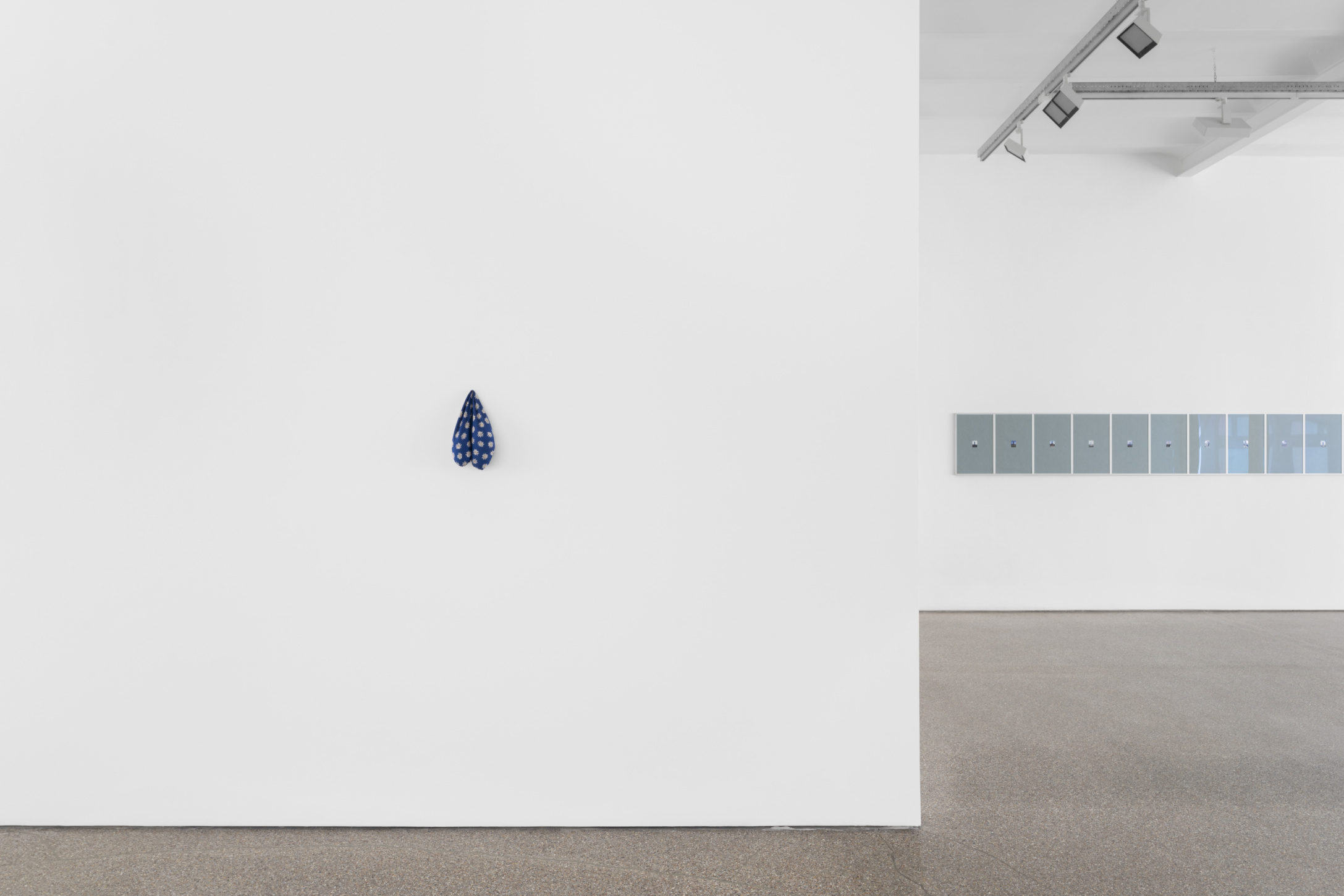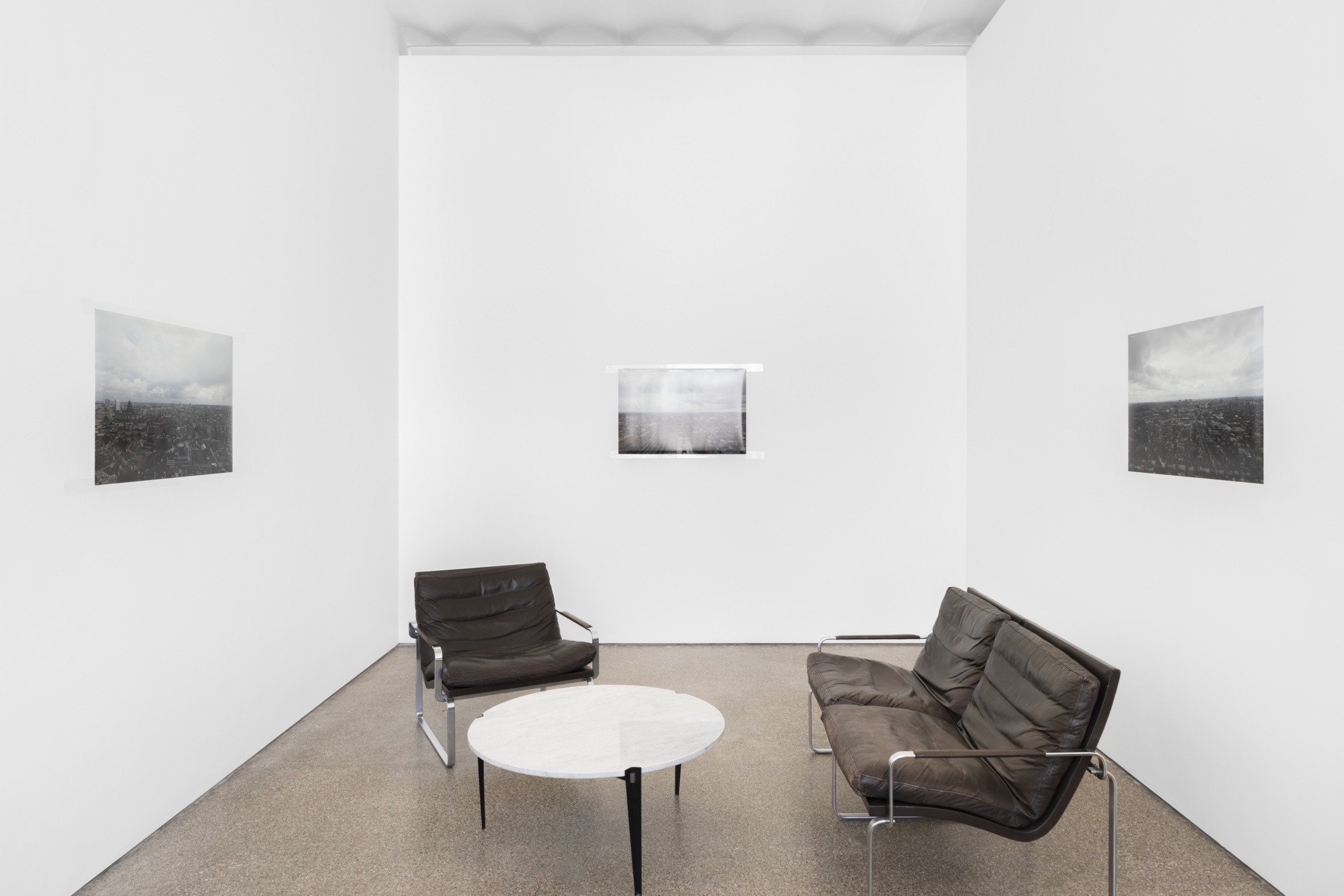For her fifth solo exhibition at Galerie Greta Meert, Sophie Nys presents a series of polaroid photographs of Brussels’ iconic Pension Tower. Built in the mid 1960s for the Belgian Federal Pension Service, this 148 meters skyscraper also known as the South Tower is the tallest building in Belgium. The eighteen photographs taken by Nys from the rooftop of the building where she resides, allegorically stand-in for the number of years that the artist will have to keep working and pay social contributions before she can retire. The legal age of retirement in Belgium is currently set at 67 years for people who will retire after February 2030. The retail price of one polaroid represents the amount of pension money that Nys is set out receive on a monthly basis once she retires (one polaroid = 1588,44 euros, the equivalent of one month of Nys’ future pension when calculated today).
Alongside these photographs, the artist placed three offerbloks throughout the space. These wooden offertory boxes are inspired by the troncs commonly found in Christian churches built before the 19th century to collect coins for charitable purposes. Originally made from hollowed-out tree trunks, these boxes were intended to collect funds for poor relief prior to the secularization of social systems of redistribution. In some cases, the money would arrive directly to the rectory through a slanted tube. Here, Nys’ evocatively shaped alms boxes speak to the formal connection between past and the present systems of redistribution. The exhibition is accompanied by Slot, a publication where Nys compiled historic images of poor boxes found at the Royal Institute for Cultural Heritage (KIK-IRPA). Slot is available by donation—just put a coin through the metal tube in the wall.
In addition, Sophie Nys brings together an array of smaller works like a series of puns and succinct conceptual schemes pertaining to labor and value. In Consanguinity (2023), diamonds inherited by the artist and thereby purchased before the 2003 Kimberley Process Certification Scheme (KPCS) are nonchalantly encased in a simple clip frame. In turn, in Droog Zaad, a neck pillow filled with seeds takes the shape of another kind of family jewels thereby evoking the Dutch expression sitting on dry seed (to be broke). A footrest produced in Addis Abeba and named after the Ethiopian singer Mahmoud Ahmed who once worked as a shoeshiner ambiguously waits for potential customers. In the meantime, a rotated floor-plan of the pension tower evokes a schematic and seemingly eternal cycle — Bureaux Bureaux Bureaux WC; Bureaux Bureaux WC Bureaux…
Sophie Nys (1974, Borgerhout, Belgium) lives in Brussels, Belgium. Recent solo exhibitions include: Keijiban (2023), Kazawa, Japan; La Salle de Bains (2021), Lyon, France; Kunsthal Aarhus BBC (2021), Denmark; Galerie Greta Meert (2019), Brussels, Belgium; Kiosk (2019), Ghent, Belgium; Galeria Quadrado Azul (2019), Lisbon, Portugal; Guimaraes (2019), Vienna, Austria; CRAC Alsace (2015), Altkirch, France. Group exhibitions include: “Time” (2023), Kunsthaus, Zurich, Switzerland; “All Our Yesterdays” (2023), IKOB, Eupen, Belgium; “Conversation Pieces” (2022), SFMOMA, San Francisco, USA; “Risquons-Tout” (2020), WIELS, Brussels; “Machines à Penser” (2018) Fondazione Prada, Venice, Italy; “Publishing as an artistic Toolbox” (2018), Kunsthalle, Vienna; “Parcours” (2017), Art Basel, Switzerland. “They printed it!” (2015), Kunsthalle, Zurich; “The Library Vaccine” (2014), Artists Space, New York, USA; “The Way of The Shovel” (2013), MCA, Chicago, USA; “Push pins in elastic space” (2013), Nelson Freeman, Paris, France; “Common Ground” (2012), Biennale di Venezia, Italy. Her work is part of public collections such as FRAC Île de France, FRAC Dunkerque and CNAP in France; SFMOMA in San Francisco and MoMA New York (USA); Museum für Gestaltung in Zürich; SMAK Ghent, MuZEE Ostend and M HKA Antwerp in Belgium.
